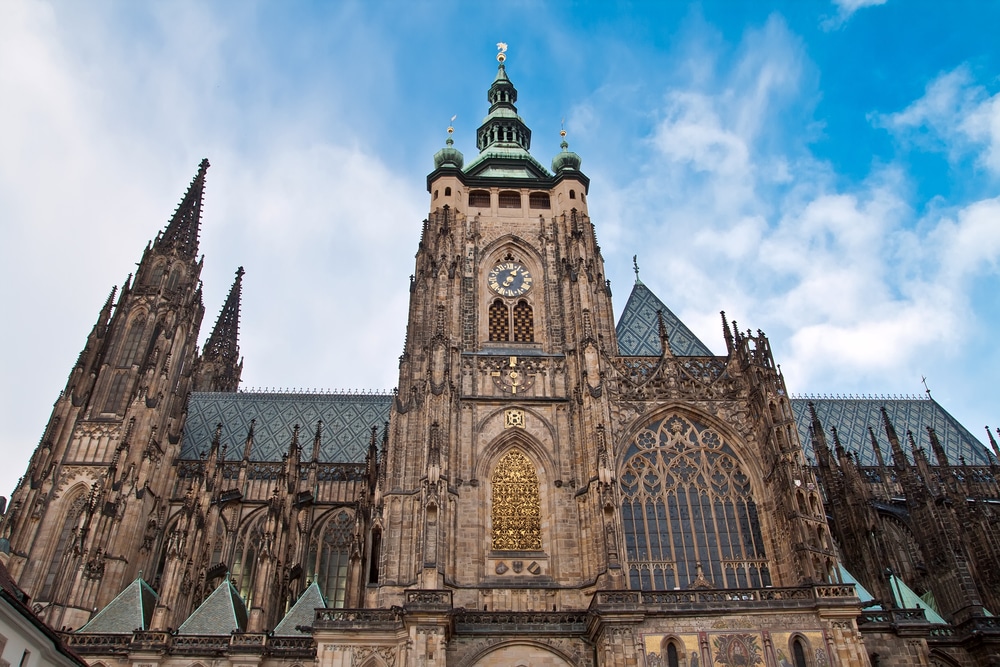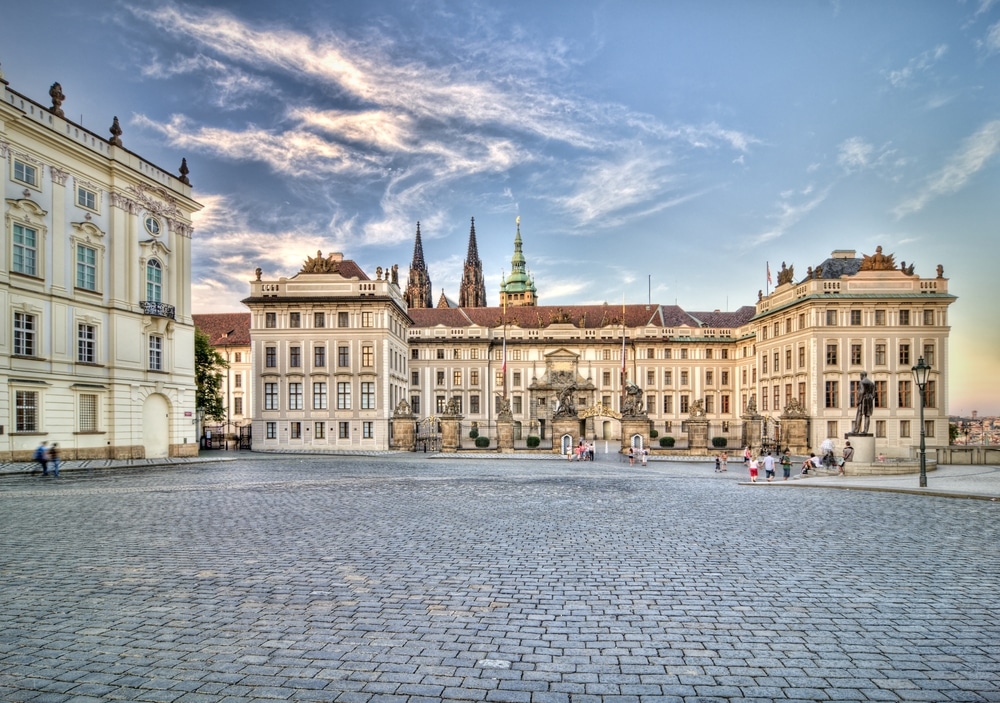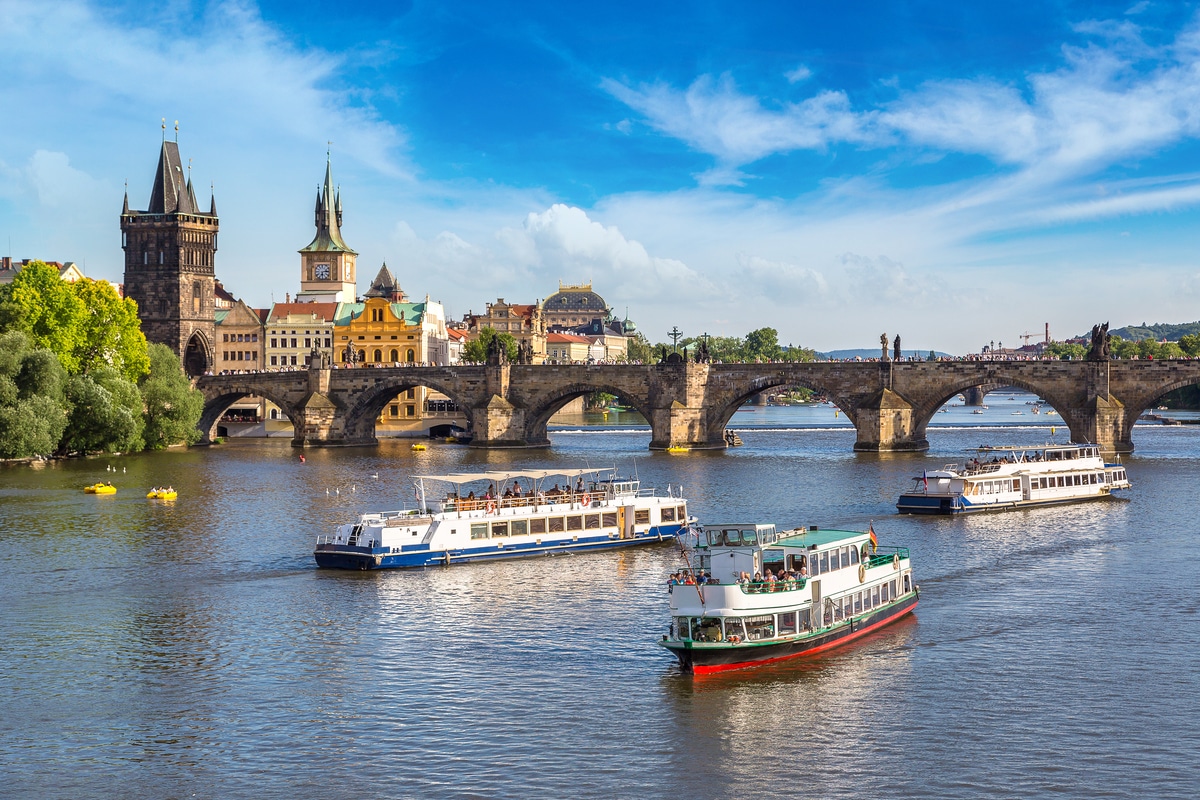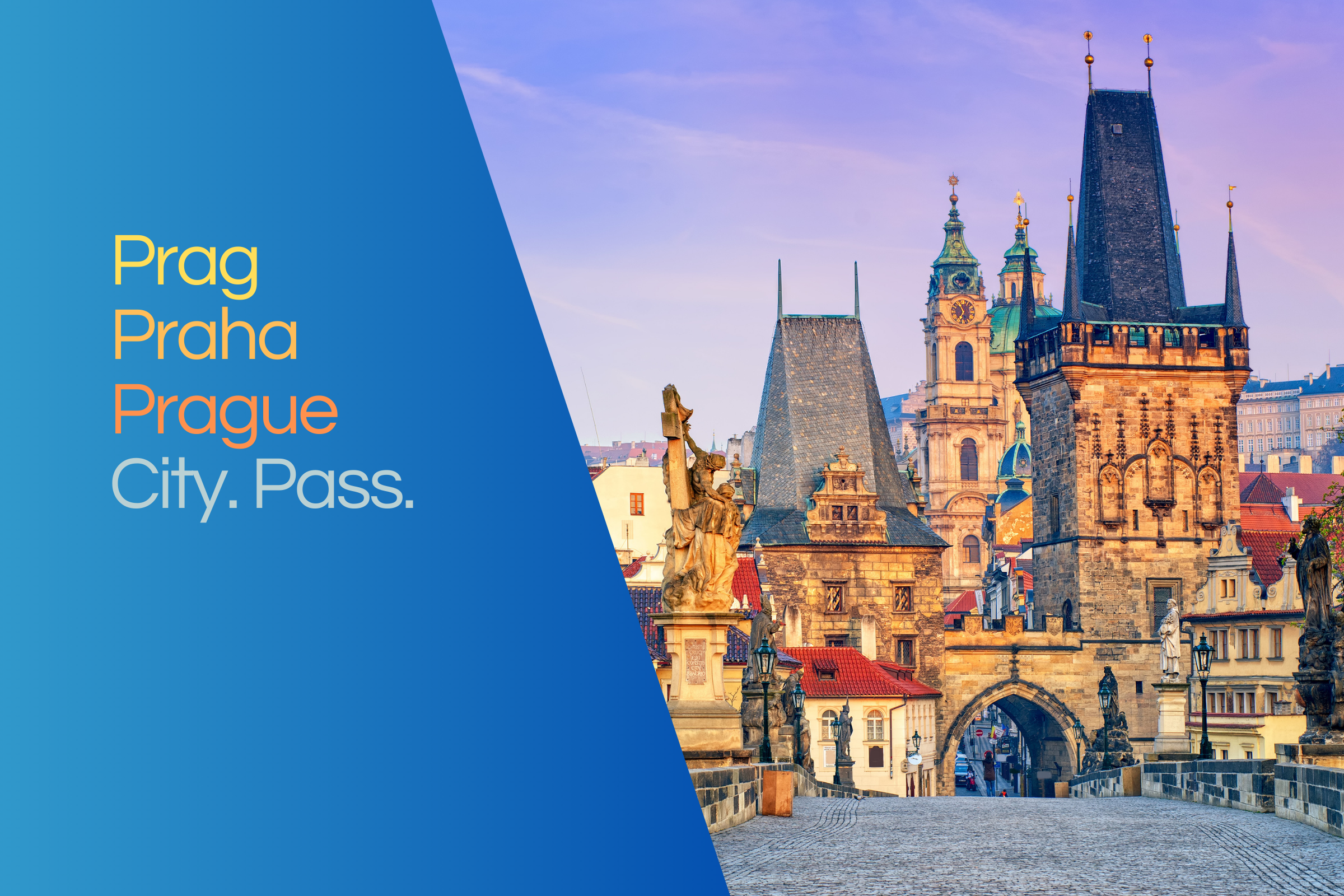- Home ›
- Czech Republic ›
- Prague
Prague Cathedral
Prague Cathedral is one of the most impressive and beautiful Gothic buildings. In the course of its history it has been sung about and written about many times - and it is many things in one: coronation church and burial place of Czech kings, tomb of saints and martyrs, bishop's church, reliquary and treasury. In the course of more than a thousand years of its construction, it became a building whose beauty, richness and diversity testify to Prague's remarkable role in European history. Today it is part of the World Heritage Historic Centre of Prague.

Like many Gothic cathedrals, St. Vitus Cathedral in Prague was built over predecessor buildings (a first rotunda on Castle Hill around 925, a Romanesque basilica in 1061). It houses precious relics, such as those of the church's patron saint, St Vitus (Latin Sanctus Vitus). Relics have miraculous powers and made a place a hot spot in the Middle Ages. They were an attraction. The streams of pilgrims thus drawn to Prague brought money - that was as important then as tourism is today. More relics were added, and eventually a new Gothic building was planned.
Another factor was the imperial dignity. Charles IV, born Wenceslas (Václav) in Prague, was actually a Luxembourger by birth and went to school in Paris. This is important for the further history of St. Vitus Cathedral, as Charles IV became acquainted with French cathedral Gothic there. After the elevation of Prague to an archbishopric in 1344, the time had come: Charles, or Wenceslas as he was then known, appointed a French master, Matthias of Arras. A French Gothic cathedral was to be built on Czech soil, as this had been considered the type of royal church par excellence since the 13th century - and Charles had been a candidate for the German kingship since 1344.
After the death of Matthias of Arras in 1352, another artist was called in who came from the most famous family of master builders of the Middle Ages: Peter Parler. Only 23 years old, he proved quite equal to the difficult task. Peter Parler spent more than two thirds of his life as a master builder at the Prague Cathedral building lodge. He designed the high choir (1370-1376) and the complicated buttresses with tracery forms of inexhaustible inventiveness. Elegant, dynamically merging forms fill the framing pointed arches. Only on closer inspection does it become clear that hardly one window, hardly one tracery filling is like another. Shortly before his death (1399), Peter Parler had closed off the already completed parts of the cathedral to the west with a wall. The choir, Wenceslas Chapel, transept, Golden Gate and the basement of the south tower (from 1396) were to be used despite the continuation of construction work to the west - and so it remained for almost 500 years.
Not unlike Cologne, the cathedral was not completed until the 19th century, from 1861 to 1929, in neo-Gothic style. Inside, one notices all the beauty of this building and of Peter Parler's unique art: softly swinging the triforium galleries back and forth - this cannot be found anywhere else. The Wenceslas Chapel (1358-1367) contains the coronation insignia, the tomb of St. Wenceslas, and the walls are decorated with Bohemian gems. In the nave there are other imperial tombs and the high tomb of St. Nepomuk by Johann Fischer von Erlach (18th century).



